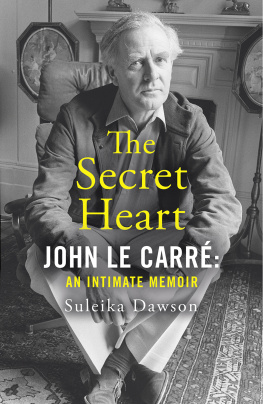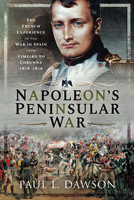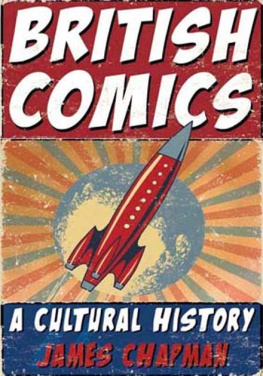The Trials and Triumphs of Les Dawson

First published in hardback and trade paperback in Great Britain in 2012 by
Atlantic Books, an imprint of Atlantic Books Ltd.
Copyright Louis Barfe, 2012
The moral right of Louis Barfe to be identified as the author of this work has been asserted by him in accordance with the Copyright, Designs and Patents Act of 1988.
All rights reserved. No part of this publication may be reproduced, stored in a retrieval system, or transmitted in any form or by any means, electronic, mechanical, photocopying, recording, or otherwise, without the prior permission of both the copyright owner and the above publisher of this book.
Every effort has been made to contact all copyright holders. The publishers will be pleased to make good any omissions or rectify any mistakes brought to their attention at the earliest opportunity.
Material from the BBC Written Archives Centre reproduced courtesy of the archive.
9 8 7 6 5 4 3 2 1
A CIP catalogue record for this book is available from the British Library.
Hardback ISBN: 978 184887 250 9
E-book ISBN: 978 085789 670 4
Printed in Great Britain
Atlantic Books
An imprint of Atlantic Books Ltd
Ormond House
2627 Boswell Street
London
WC1N 3JZ
www.atlantic-books.co.uk
For Judy Godman, my mother-in-law
LIST OF ILLUSTRATIONS
INTRODUCTION
When Les Dawson died on 10 June 1993, it was one of the very few occasions where the great comedians timing deserted him. Changes in television light entertainment had meant that he was finding it harder to get the quality and quantity of work that he was used to, and Dawson was wondering if his career was on the wane. His last series of The Les Dawson Show for the BBC had been in 1989, and Blankety Blank, the game show that he had made his own after Terry Wogan moved to a thrice-weekly chat show, had come to an end in 1990. Another game show, Fast Friends, had lived up to the first half of its title by lasting for only one series in 1991.
Perhaps surprisingly, though, for a man who mined laughs from a pit of pessimism, he acknowledged the silver lining of his professional cloud: that his declining fortunes as a performer would give him more time to write, one of his great passions. Also, drama directors were beginning to recognize his qualities as a straight actor. Dawson was more than just a gag machine, and undoubtedly would have used his considerable intelligence to continue his career of creativity one way or another, even if his days as a top-flight comic were numbered.
Which, of course, they werent. Had Dawson survived even another decade, he would have undergone a renaissance similar to that of Bob Monkhouse panel games, the Edinburgh Festival, younger comedians queuing up to drop his name as an influence. He shared one important quality with Monkhouse: a generosity of spirit, born from a lack of professional insecurity. Like Monkhouse, Dawson knew how good he was, and he also realized that if a show got a laugh, it reflected well on everyone involved. Morecambe and Wise had the same attitude. While many top-line performers look after number one to the exclusion of all else, and ensure that the pole they clambered up is well greased to prevent others joining them, Dawson always had time for everyone and didnt try to keep all of the best lines for himself. Had he lived, he would have been 80 in 2011, the proud father of four children, with the youngest still only in her late teens. Its impossible not to conclude that he went far, far too soon.
Although his shows are rarely repeated, there remains a surprisingly high level of awareness of his work, alongside an unsurprisingly immense reserve of public love and goodwill towards this great performer and indisputably genuine man. People barely old enough to remember his TV career refer to pulling a Les Dawson face. Situations are still described as like something out of a Les Dawson monologue. Standing only five feet six inches when alive, in the afterlife he casts a long, benign shadow over the nation.
Looking at Dawsons life, what becomes apparent are the contradictions. His carefulness with money was balanced by a great generosity when it came to giving his time. When at home with his family, he favoured tea by the gallon. Away from home, faced with the temptations of the touring life, he could drink anyone under the table. Even though he was always coming up with new comic ideas and material, he had a tendency to fall back on old standbys. Physically fearless and willing to do anything in pursuit of a laugh, he could be a coward when faced with confrontation in his professional life. In short, he was human, and thats why audiences loved him and continue to love him.
What follows is the story of a comedian who, perhaps more than any other, spoke for the phlegmatic, resigned, sarcastic, glorious British attitude to life.
CHAPTER 1
Slumps dont bother me. I was a failure during the boom.
In global terms, 2 February 1931 was just another average Monday in the Great Depression. Over in the US, the House of Representatives and the Senate were in deadlock over drought and unemployment relief. In Britain, a weavers union deputation trekked to London to protest to Cabinet ministers about the more looms system, whereby they were expected to work harder for less pay, while Winston Churchill used a speech in support of the Tory candidate in the East Toxteth by-election to denounce the Labour Government of the day, led by Ramsay MacDonald. There was some good news, though. On the sands of Ormond Beach, Daytona, Captain Malcolm Campbell pushed his car Bluebird to an unofficial speed of 240 mph, beating Sir Henry Segraves world land speed record of 231.36 mph. Meanwhile, there was derring-do closer to home when a film crew taking aerial footage of London had to make a casualty-free emergency landing in a Brixton garden.
While all this was going on, 203 miles north of Brixton, at 246 Thornton Street, Collyhurst, in the Blackley sub-district of Manchester North, a boy was born to Julia Dawson, formerly Nolan, and her bricklayer husband Leslie, after whom the child was named. The two-up, two-down house was home not only to the Dawsons, but also to Julias parents, David and Ellen Nolan, and her brother, Tom. In other words, as a result of financial strictures, Leslie Dawson senior was forced to live with his in-laws. Leslie junior never had a middle initial and would never use a professional pseudonym, being proud to take his fathers name to the top of the bill at the London Palladium. He would save the fancy stuff for the comic characters he would go on to play, among them the myopic lecher Cosmo Smallpiece, a down-at-heel actor known variously as Quentin Sadsack and Rathbone Mole, drunken conjuror Zebediah Twine, and gurning housewife Ada Shufflebotham.
In later life, Dawson made light of the environment in which he grew up. Manchester in the thirties... was a depressed decade and most of the people who lived in our area were decayed, he wrote in 1983. where Dawson entered the world were better than a hole in the ground, but it was a deeply deprived neighbourhood.
On the day that Dawson was born, the Manchester Guardians front page advertised a free lecture by the Reverend H. Allen Job, FRGS, FZS, at Platt Hall Branch Gallery and Museum on The Treasure Island of Tasmania, while the works of L. S. Lowry were on show at the Salon Gallery in Oxford Road. The adult Dawson would devour lectures and trips to art galleries, but the item of greatest interest to Collyhurst residents in February 1931 would have been the masthead advertisement for Wood Street Mission, asking for food, clothing and footwear to pass on to needy children.
Next page










